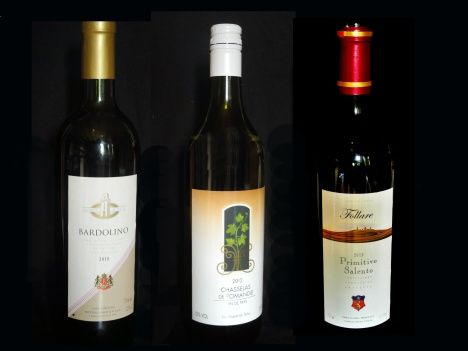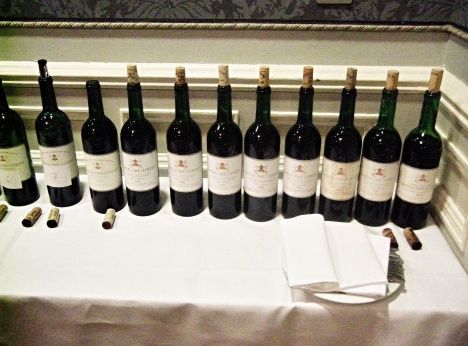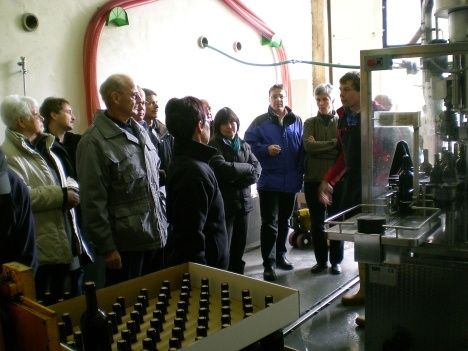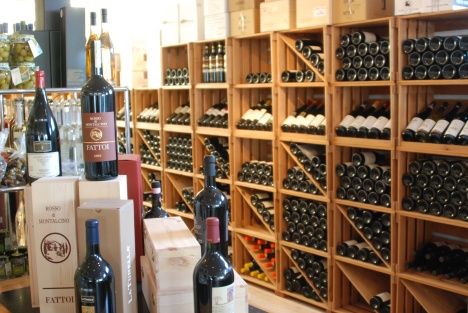 |
| Wines% that are below the pain threshold and can still be a pleasure (Photo: P. Züllig) |
This little episode keeps me busy, doesn't let me go. I think of the effort of the winegrower, where I help to harvest the grapes year after year. I think of the work in spring, when it is usually still cold and foggy and the vines are pruned back. I think of the work in the cellar, where the must slowly becomes wine, carefully looked after and guided by the cellar master. I think of the barrel storage facilities where the wine carefully matures, develops, unfolds. That's all I like to think about, because all this - a lot of manual work, great skill, far-reaching decisions - cannot be had for five francs (per bottle).
Change of scene. This time I'm sitting in the middle of wine lovers at a tasting of high-quality Bordeaux. A "vertical": 18 bottles of "Pape Clément" are up for comparison. The setting: a gourmet menu - "Viennoise of duck liver on green asparagus and fresh strawberries with butter sea salt caramel" and so on. On the serving table next to it are the opened bottles, vintages between 1955 and 2005. None of the bottles costs less than a hundred francs, the most expensive one more than 300. Weaker vintages - for example 1991, 1992, 1997 - were not even put up. No one says it, but everyone agrees: wines under a hundred francs don't make it into the glass here. It is a different wine world, the world of expensive wines. Here, too, there are obviously pain thresholds - downwards, perhaps around 50 francs a bottle.
 |
| Eleven of the eighteen Bordeaux Pape-Clément are ready for tasting (Photo: P. Züllig) |
The two wine worlds seem to get along badly. The argument is usually based on money or, to put it another way, on the question: how much can a wine cost? But even this is not usually said in this way. They prefer to talk about the price-performance ratio - abbreviated to PLV - and don't realise that even there the ideas are far, far apart and hardly measurable. How can "performance" be assessed when enjoying wine and how can it be measured in terms of prices?
There is something like a sensory rule book that ultimately leads to points. Parker points (PP), for example. But can one say: a wine with 80 PP costs ten euros, one with 85 PP thirty, one with 90 PP seventy and wines with more than 90 PP a hundred and more euros? Nonsense! You can't calculate like that. Quite different factors determine the price: production costs, reputation, popularity, market laws... and last but not least, cult status.
Ultimately, the question is: How much is a wine worth to me (personally)? Or the question of pain thresholds. It's usually not the money spent that hurts. You can draw up a wine budget according to your own financial possibilities. You can vary it, from cheap to expensive wine... and also the rhythm at which bottles are opened. No - these pains are (in almost all cases) about one's own value system, one's own consciousness. About the question: What must a wine "achieve" and how much am I willing to pay for it? Paying not only in coins and notes, but also with lost joy of life, with endangerment of health, with renunciation of pleasure and enjoyment.
 |
| Visit to a small winegrower% who has switched to organic wines (Photo: P. Züllig) |
And people are very different in this respect. Their value systems diverge widely and cannot be brought together. What causes pain for one person is great pleasure for another; what one person raves about causes pain for another. But all this is hardly measurable. The only things that can be measured are the costs of production and purchase. But even these are quite different - depending on the country, wine region, type of wine production, size of the vineyard, degree of mechanisation, area under cultivation, wage costs, and so on. An Amarone - with its elaborate production process, small quantities, etc. - incurs quite different production costs than, for example, a Beaujolais Primeur (even if you don't put the quality into perspective). And buying from a wine merchant who can offer advice, the best service and quality costs more than reaching for the shelves of a discounter.
 |
| At the wine merchant (Photo: P. Züllig) |
To produce a top wine, it takes - according to general figures - about ten euros for the material and the production (converted to one bottle). Even if in reality it should be twice or three times as much (for example, because the work is particularly elaborate and cost-intensive) or even only half or a third of that (in the case of mass production and extensive mechanisation), these are nevertheless indications of the price-performance thinking in wine. Even if you add profit, shipping, intermediary trade, sales, etc., there is a range in the price.
Strangely, the pain threshold for some and others (consumers of both expensive and cheap wines) usually lies well outside this price range. So the pain thresholds must have other causes. It is not the price-performance factor that causes pain, but...? Is it not rather the expectations one has of a wine? Isn't it expectations that - if at all - can hardly or only very rarely be fulfilled?.
 |
| Shopping in the village shop (Photo: P. Züllig) |
Perhaps (here, too) boundaries need to be dismantled or shifted. The hunt for the cheapest wine can lead to addiction just as much as the hunt for the ultimate pleasure. Both lead to addictive behaviour, which one tries to limit. Pain thresholds are far easier to accept than the admission that no wine can fulfil all our - often very diffuse - expectations and satisfy our - mostly unacknowledged - longings. Whether 15 francs is the upper limit or 30 euros the lower limit is ultimately irrelevant.
Sincerely
Yours/Yours